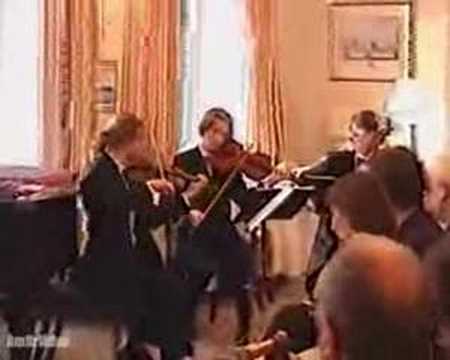The Krönungslieder — Walzer was the first of two compositions — the other being the waltz Souvenir de Nizza op. 200 — which Johann Strauss dedicated «in deepest respect to her Majesty Maria Alexandrovna, Empress of Russia». The Empress, formerly Princess Maximiliane Wilhelmine Marie of Hesse-Darmstadt (1824-80), the daughter of Grand Duke Ludwig II of Hesse, had assumed her Russian cognomen upon her marriage in 1841 to Grand Duke Alexander Nikolaievich (1818-81), eldest son of Tsar Nicholas I. Upon the latter’s death on 2 March 1855, during the Crimean War, his son acceded to the throne as Tsar Alexander II. Maria Alexandrovna was to bear her husband six sons and two daughters, among them the future Tsar Alexander III.
Johann Strauss had commenced his first summer concert season at the Vauxhall Pavilion in Pavlovsk, near St. Petersburg, on 18 May 1856 (= 6 May, Russian calendar). From the outset his appearances had attracted the attention of the Russian royal family; for example, the Grand Duke Konstantin attended three of Johann’s concerts while his wife, the Grand Duchess Alexandra Jossiphovna, an amateur composer, graced the audience on no less than nineteen occasions. Even Tsar Alexander II was present at two of Strauss’s concerts, although there is no record of the Tsarina’s attendance — at least, not according to the detailed diary of the viola-player, F.A. Zimmermann. Almost certainly, however, Maria Alexandrovna would have been much in evidence at the ball which the Tsar hosted on 8 August (= 27 July) at which Strauss and his orchestra played. Such was the Tsar’s delight with Strauss’s performances that, according to a report in the Wiener Theaterzeitung on 4 September 1856, the Viennese Kapellmeister was commanded by the Tsar to attend the coronation festivities in Moscow on 7 September ( = 26 August) and to conduct his orchestra at the festivities at Court and at the ball which the Austrian ambassador extraordinary, Prince Paul Esterházy, was to give for the Russian Court. Johann celebrated the coronation in two festive compositions: the Krönungs-Marsch op. 183 (Volume 12 of this series) and the waltz Krönungslieder. The latter work, into which Russian melodies are woven, received its first performance at Pavlovsk on 14 August (= 2 August), at Strauss’s second benefit concert, together with the polka française L’Inconnue op. 182 (Volume 22) and was heard a total of 32 times during Johann’s concerts at the Vauxhall Pavilion. In a letter written to his Viennese publisher, Carl Haslinger, on 14 September (= 2 September), Strauss drew attention to his new waltz and polka, «with which two pieces I have had great success here. Although I had little time, I had even less confidence about their successful outcome».
Johann returned to Vienna in mid-December 1856, but it was not until the following year’s carnival that he introduced his home audiences to the Krönungslieder Walzer. He took the opportunity to launch its Viennese première at his benefit ball held in the Sofienbad-Saal on 16 February 1857. This novelty evening was announced as a ‘Dance Battle’, the ladies present being invited to vote for their favourite piece of music played by the orchestra. If Strauss had expected his new waltz to win the day, he would have been disappointed: while Krönungslieder «met with uncommon applause and had to be repeated three times» (Fremdenblatt, 18.02.1857), the vote went to his French polka Demi-Fortune op. 186 (Volume 24). The announcements for the evening erroneously gave the dedicatee of Krönungslieder as the Tsar of Russia, a mistake corrected by the Wiener Zeitung on 17 February, announcing the publication of the waltz that day by the firm of Carl Haslinger. Strauss’s copyist, the viola-player Georg Kraus, had in fact completed the fair copy of the Krönungslieder score on 11 January, and from this the publisher carried out the standard process of preparing separate orchestral parts and the usual editions for piano as well as solo violin with piano accompaniment.









